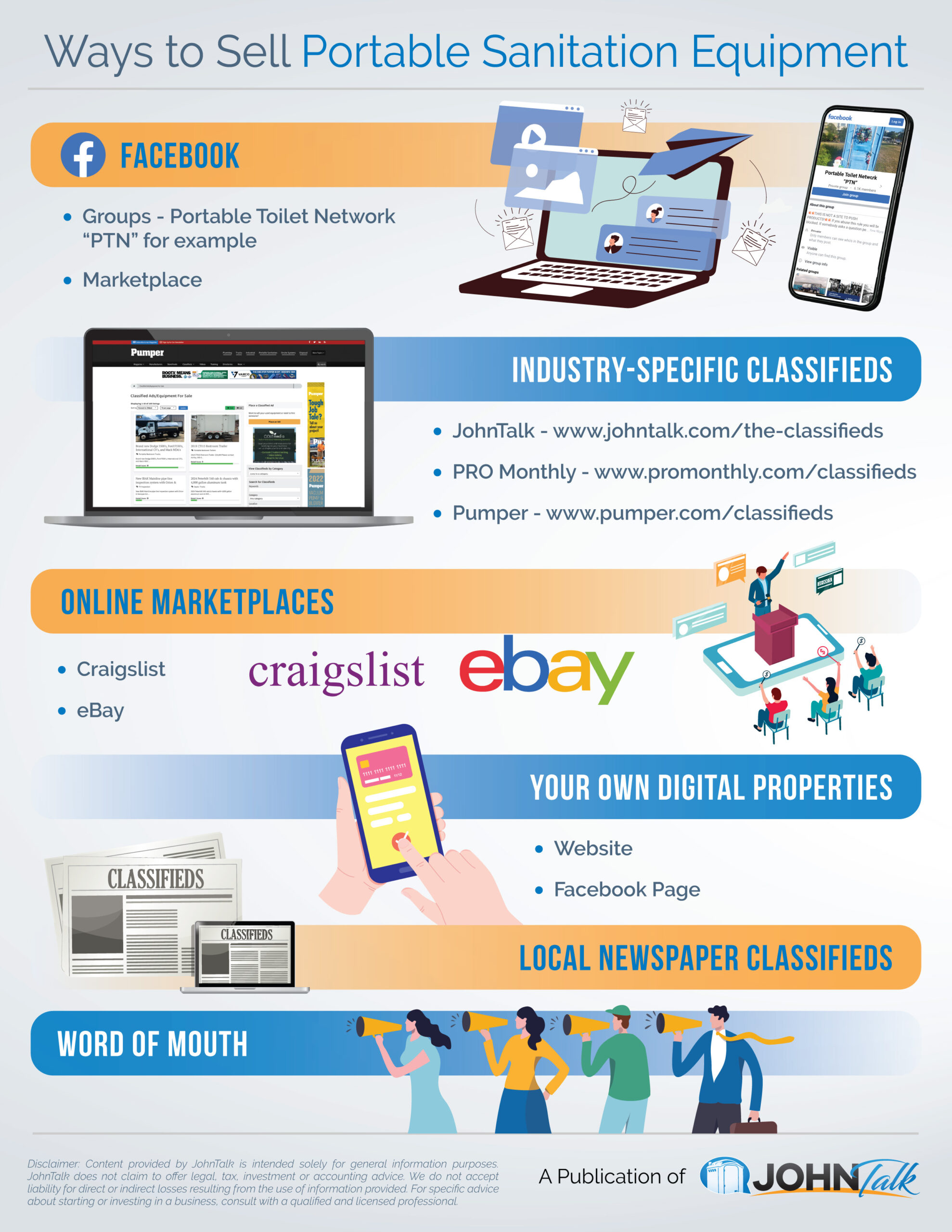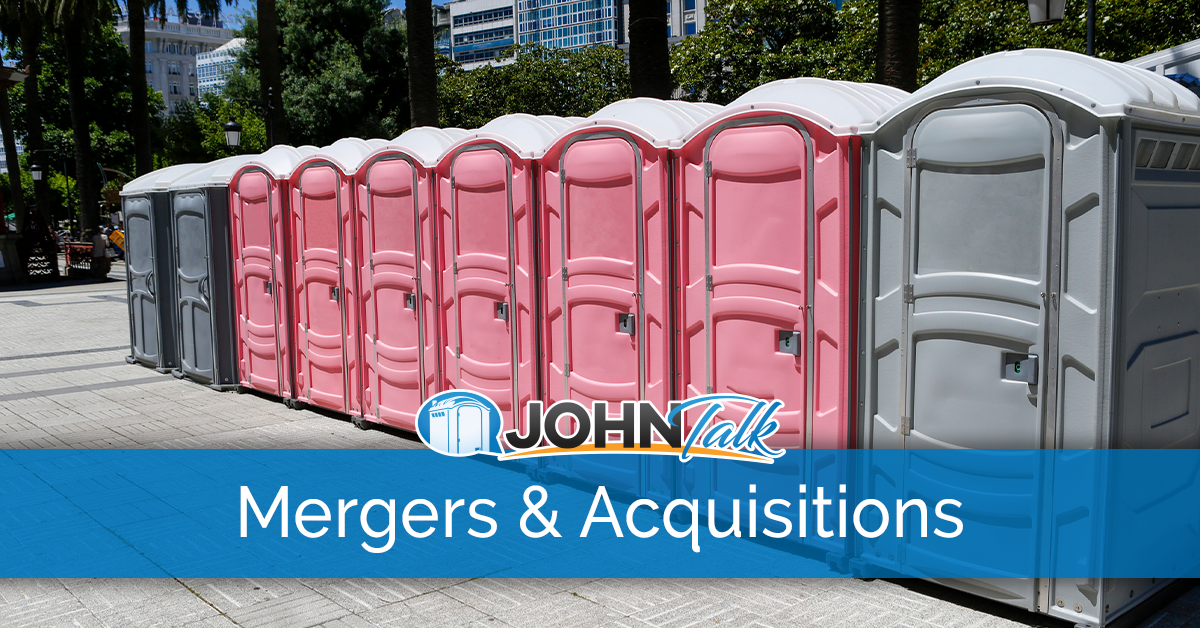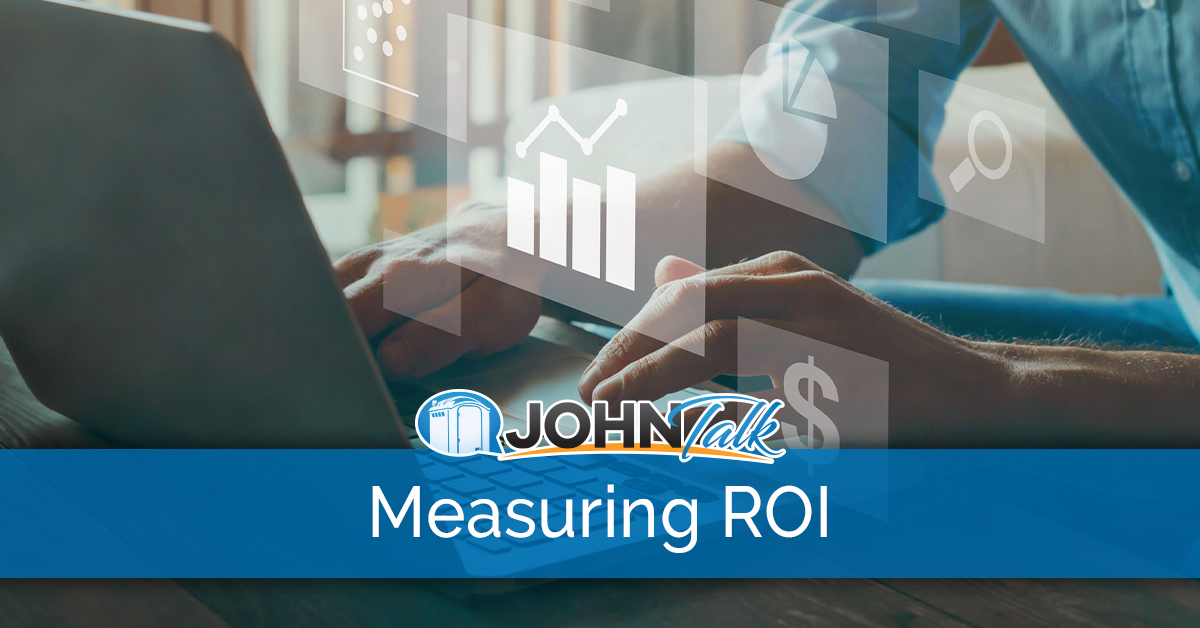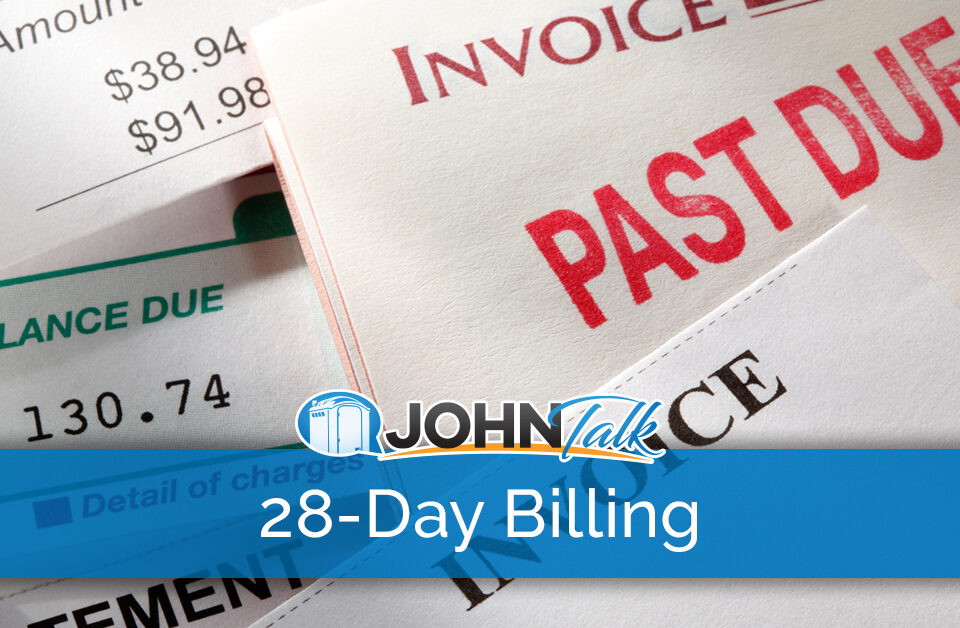
INFOGRAPHIC: Ways to Sell Portable Sanitation Equipment
February 20, 2023
Mergers & Acquisitions: Key Things to Know
March 1, 2023Event and construction contracts provide reliable income for your portable restroom rental business. But are you earning enough profit per contract? You can’t analyze what you don’t measure, so calculating your return on investment (ROI) is essential. PROs use financial valuations to accurately bid or quote individual contracts. Plus, you can use this metric to see your actual profit.
Measuring ROI on individual contracts helps improve your estimations and ensure profitability. It’s also a key metric for long-term planning, from assessing your pricing to determining the value of new equipment. Fortunately, calculating ROI is relatively simple, and you don’t have to be a financial whiz. Here’s how to start and what to know.
Return on Investment (ROI) Definition and Use Cases
Return on investment, or ROI, is a financial ratio. It divides your net income by total costs and then multiplies the figure by 100 to get a percentage. When using actual numbers, ROI shows how much profit you made after accounting for expenses. Likewise, you can use financial valuations to estimate the potential profitability of contracts, purchases, or projects.
Since the formula is simple yet flexible, many PROs apply it to various business activities. For instance, you can calculate your return from placing an ad in your local newspaper (marketing ROI). Or, learn if you should charge more when entering into a contract for your rentals and services (individual contract ROI).
The Basic ROI Formula
Before you can figure out ROI, you must calculate net income. This calculation takes your total revenue from the contract minus your total expenses. Once you have your net income, divide it by your total costs. Then, multiply the total by 100 to get ROI.
The ROI formula is:
- Net Income (Income – Expenses) / Total Expenses x 100 = ROI
How to Measure the ROI on Individual Contracts
So, how does this formula play out when calculating the ROI of individual contracts? The income portion of the equation is simply the total amount your customer paid, as listed on the service agreement. This number should include additional fees, such as pickup, delivery, or emergency service charges. Alternatively, you can take your rental price per unit multiplied by how many units you supplied or will supply.
Now, here’s the complicated part: figuring out your total expenses. If you already know your cost of doing business and have calculated direct and indirect figures into your rental unit pricing, then you have a head start. Otherwise, there’s no time like the present to begin. Grab your financial statements or balance sheets, and let’s start.
Calculate Your Costs
Typically, PROs use cost-based pricing. It factors direct and indirect expenses related to providing services. However, to calculate ROI, you need your cost per unit before adding a markup. Since we’re calculating your return on a single contract, we will consider the direct expenses you incurred for the length of the agreement. These are the real costs of doing business with this customer on this contract.
Direct contract costs consist of the following:
- Fuel for delivery, pickup, and servicing
- Toilet paper and other paper products
- Dump or waste management fees
- Cleaning, sanitizing, and deodorizing supplies
- Sales tax
- Driver time
Then, add your indirect costs, of which the amount will differ per rental type and contract. Customers may require more or less blue or toilet paper. Now, you can get as specific as you want here. More specificity increases accuracy but also takes longer to calculate.
Compute your indirect expenses by looking at total costs and then breaking them down to a price per unit. These expenses include fixed and variable amounts. Your CPA can walk you through the best ways to allocate indirect or overhead costs.
Indirect costs may include:
- Building or property cost
- Utilities
- Insurance
- Marketing and advertising
- Phone and internet service
- Administrative staff salary and benefits
- Business subscriptions
- Employment and business taxes
- Equipment
- Maintenance expenses
- Depreciation
Use the ROI Formula
Now, it’s time to put together the pieces. Add your direct and indirect expenses. Then, subtract this figure from your contract revenue. This provides your net income. Now, divide your net income by your total costs and multiply the answer by 100. That is your return on investment.
Let’s look at a hypothetical scenario. John’s Pots entered into a contract with Seely Events to provide toilets for a weekend event. The agreement included one ADA unit ($200), four deluxe models ($165) for VIP areas, and 10 standard restrooms ($110). Standard and ADA toilets include two large toilet paper rolls and hand sanitizer. The deluxe versions add paper towels and hand soap.
The customer paid $1,960 plus $147 tax. John’s Pots’ direct costs included 30 rolls of toilet paper, cleaning supplies, roundtrip mileage for delivery, and roundtrip driver hours. Altogether, John’s Pots spent $1,800 (including the $147 sales tax bill). Therefore, John’s Pots’ net income for this contract was $307.
Here’s how that looks in the ROI equation:
- $2,107 total income – $1,800 total expenses = $307 net income
- $307 net income / $1,800 total expenses = 0.1705
- 1705 x 100 = 17.05%
- $307 net income / $1,800 total expenses x 100 = 17.05% ROI
Get the JohnTalk “ALL-ACCESS PASS” & become a member for FREE!
Benefits Include: Subscription to JohnTalk Digital & Print Newsletters • JohnTalk Vault In-Depth Content • Full Access to the JohnTalk Classifieds & Ask a PRO Forum
Click here to learn more.Understand Your Results
A positive ROI means your contract was profitable, whereas a negative one shows that you owed more money than you earned. But there are different ranges of profit margins. Typically, event rentals tend to have a higher return on investment than construction or one-off rentals.
Now, a 17% profit isn’t too shabby. But there may be room for improvement depending on your market and competition. Let’s look at a different hypothetical situation. Suppose you add a $50 delivery fee for rentals less than a week in length and boost your per-unit pricing by 3%. Although this adds an extra $8.16 to your expenses for additional tax, it’s still a net profit increase leading to an ROI of 22.99%.
When to Use ROI for Contracts
Many PROs want to know their actual ROI after a contract ends. It can help you decide whether to increase rates to ensure a higher profit margin. Or, in some cases, it can identify certain clients or contracts that aren’t worth pursuing. This could be when the delivery and pickup location is outside your regular route, resulting in higher-than-average fuel and driver time costs.
Additionally, if you track ROI for contracts regularly, you may find that specific customers cost you money affecting your profit margins. Having this information in hand, along with financial projections, can help you make the best decision when two clients call wanting to rent your sole luxury trailer on the same weekend.
Benefits and Limitations of ROI
The return on investment metric is useful for understanding your contracts’ profitability and correctly estimating when bidding events. However, there are limitations to using it. You can overcome these by understanding when to use contract ROI and knowing how to leverage additional key performance indicators.
Importance of Determining Contract ROI
It’s typically easy to calculate ROI, especially if you know your indirect expenses and how to allocate them among services. Financial valuations also let you compare your return between various contracts. This capability is helpful when deciding which service lines to expend your time and energy on. It can show you the differences between individual agreements or several data sets.
For instance, you can combine figures for all event contracts to determine your overall ROI. Then, do the same for construction agreements. The results can guide your marketing and sales objectives, allowing you to spend more time gaining clients in the more profitable line.
Likewise, you can compare ROI between short- and long-term contracts. Since ROI doesn’t consider time, you’d do this calculation by grouping agreements according to length, finding the return of both categories, and comparing both figures. Again, this can help narrow your scope when making business decisions.
Drawbacks of ROI Calculations
Although ROI has its advantages, it has limitations. For example, the ROI equation doesn’t account for time. You can have two contracts, with one clearly showing a higher return. Yet, if it’s a year-long agreement, it may be less fruitful than several short-term ones.
In addition, deciding how to consistently allocate indirect expenses is complicated. And the figures don’t show non-financial benefits, such as clients who refer new customers your way or high-profile locations where your porta-potties showcase your brand.
Incorporate Contract ROI Into Strategic Planning
Return on investment enables you to see how profitable your contracts are and, by extension, how profitable your business is. You can apply the insights to different parts of your business and make better decisions.
Consider using contract ROI for:
- Pricing model: Use contract ROI to improve your job estimates when bidding, to know when to increase your prices, and how to properly price rentals.
- Upselling and cross-selling: Anticipate potential ROI by factoring in different add-ons. Then, find which ones offer the highest possible return.
- Sales and marketing strategies: Learn which revenue streams are the most profitable and focus your outreach on those areas.
- Customer comparison: Discover which repeat clients offer the greatest financial value. Use the data to decide which ones to continue with, increase prices, or drop.
- Capital planning: Monitor contract profitability to determine when to purchase equipment for particular service lines, such as a flatbed for hauling event rentals.
Start Measuring ROI on Individual Contracts
Figuring out how much to charge and comparing your anticipated ROI to your actual return is a valuable business process. It’s easy to measure ROI for individual contracts or service line agreements. And having visibility into your finances and cash flow is one of the best ways to run a successful portable restroom company.
Looking to Take Your Portable Restroom Business to the NEXT LEVEL? Download our FREE Guide: “Your Guide to Operating A Portable Restroom Business.”
Thinking About GETTING INTO the Portable Restroom Industry? Download our FREE Guide: “Your Guide to Starting A Portable Restroom Business.”






